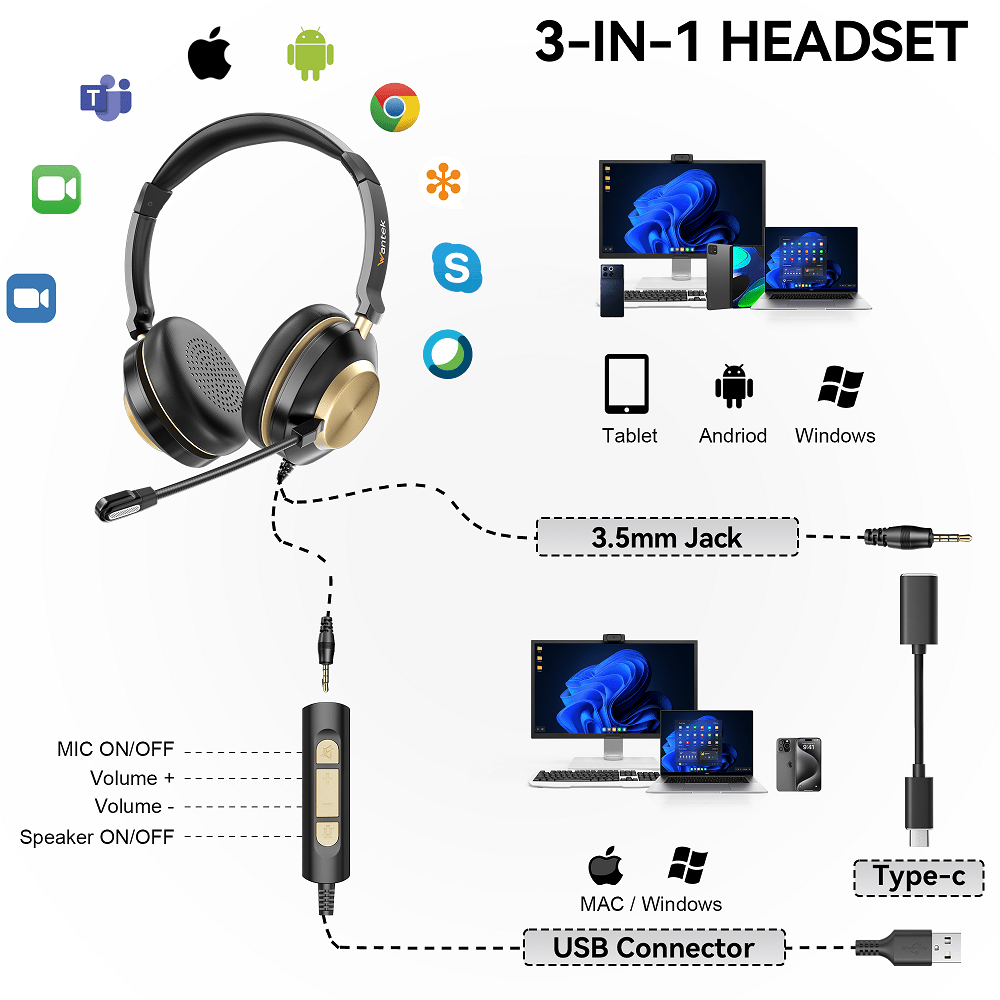Inside This Article:
- What Exactly Is a Headphone Jack to 3.5 mm Adapter?
- Why You Absolutely Need One of These Adapters
- 1. Your Device Has Abandoned the Headphone Jack
- 2. Professional Audio Gear Demands Larger Jacks
- 3. Worn-Out or Damaged Ports
- 4. Traveling with Multiple Devices
- How to Choose the Perfect Adapter
- Troubleshooting Common Adapter Issues
- Creative and Unexpected Uses for 3.5 mm Adapters
- Wrapping It Up
Adapters are the silent workhorses of modern audio. They’re small, often overlooked, and yet indispensable. Imagine this: You’re about to dive into your favorite podcast, only to realize your headphones won’t plug into your laptop. Frustration sets in. Enter the headphone jack to 3.5 mm adapter—a tiny savior in a world of incompatible ports.
This isn’t just a guide. It’s a deep dive into the unsung hero of audio connectivity. Whether you’re dealing with a 3.5mm audio jack female port or need a 3.5mm adapter to 1/4, we’ll explore every nuance. By the end, you’ll be an adapter aficionado.
What Exactly Is a Headphone Jack to 3.5 mm Adapter?
A headphone jack to 3.5 mm adapter is a compact connector designed to bridge the gap between your headphones and devices with incompatible ports. The 3.5mm jack, often called a mini-jack, is the universal standard for most consumer audio gear. But not all devices adhere to this standard.
The Anatomy of 3.5 mm Adapters
Adapters come in various shapes and sizes, each serving a unique purpose. Here’s a breakdown of the most common types:
- Female to Male Adapters: These allow you to connect a standard 3.5mm male plug to a 3.5mm audio jack female port. Ideal for devices with recessed or oddly shaped jacks.
- 3.5mm to 1/4-inch (6.35mm) Adapters: Essential for professional audio equipment. Guitars, amplifiers, and studio headphones often use these larger jacks.
- Lightning/USB-C to 3.5mm Adapters: A necessity for modern smartphones that have abandoned the headphone jack. Yes, Apple, we’re side-eyeing you.
- Splitter Adapters: Perfect for sharing audio. Plug two headphones into one jack and enjoy synchronized listening.

Why You Absolutely Need One of These Adapters
1. Your Device Has Abandoned the Headphone Jack
The trend of ditching the 3.5mm port is baffling. If your phone or laptop lacks this essential feature, a headphone jack to 3.5 mm adapter is your lifeline. No need to splurge on wireless earbuds you don’t want.
Source: TechTimes - 5 Reasons Why the Smartphone Industry Is Trying to Kill the 3.5 Mm Headphone Jack
2. Professional Audio Gear Demands Larger Jacks
Studio headphones and musical instruments often use 1/4-inch jacks. A 3.5mm adapter to 1/4 ensures your everyday headphones can connect to high-end equipment without a hitch.
3. Worn-Out or Damaged Ports
We’ve all been there. The jack only works if you hold it at a perfectly precise angle. Sometimes, the port itself is the culprit. An adapter can bypass this annoyance temporarily.
4. Traveling with Multiple Devices
Different gadgets, different ports. Older airplanes, rental cars, and hotel sound systems often have proprietary jacks. An adapter ensures you’re never left in silence.
How to Choose the Perfect Adapter
Not all adapters are created equal. Here’s what to consider before buying:
Build Quality Matters
Cheap adapters are a false economy. They introduce static, degrade audio quality, and often fail prematurely. Opt for gold-plated connectors—they resist corrosion and ensure longevity.
Compatibility Is Key
- For iPhones: Lightning to 3.5mm adapters are non-negotiable.
- For Android/USB-C Devices: USB-C to 3.5mm adapters are your go-to.
- For Studio Use: A robust 3.5mm adapter to 1/4 is indispensable.
Length and Flexibility
Some adapters are short and rigid, while others feature a bit of cable for flexibility. If your device is in a tight case, a short adapter might not cut it.
Troubleshooting Common Adapter Issues
No Sound or Intermittent Audio
- Inspect the connection: Dust or debris in the port can disrupt audio.
- Test a different adapter: Cheap ones are often unreliable.
- Restart your device: Sometimes, the audio driver just needs a reset.
Static or Poor Sound Quality
- Avoid budget adapters: They lack proper shielding.
- Check for damage: Bent or frayed connectors can ruin your listening experience.
Adapter Gets Stuck
If it’s jammed, don’t force it. Gently wiggle it loose. For 3.5mm audio jack female ports, a toothpick can help release it without damage.
Creative and Unexpected Uses for 3.5 mm Adapters
1. DIY Audio Mixing
Got an old pair of headphones and a 3.5mm adapter to 1/4? Use them with a mixer or audio interface for a budget-friendly recording setup.
2. Connecting to Vintage Equipment
Old radios, cassette players, and retro gaming consoles often use non-standard jacks. An adapter can breathe new life into these relics.
3. Car Audio Fixes
If your car’s aux input is acting up, a headphone jack to 3.5 mm adapter might just save your road trip playlist.
Wrapping It Up
Adapters might seem trivial, but they’re anything but. Whether you’re navigating a missing headphone jack, a finicky 3.5mm audio jack female port, or connecting to pro gear with a 3.5mm adapter to 1/4, the right adapter is your best friend.
Invest in quality. Keep a spare. Never let incompatible ports silence your world again.
Frequently Asked Questions
Q: Do adapters degrade audio quality?
A: High-quality adapters maintain sound integrity. Cheap ones? Not so much.
Q: Can I use a Lightning adapter on a USB-C device?
A: No. They’re as compatible as oil and water.
Q: Why does my adapter keep falling out?
A: The port might be worn, or the adapter’s connector is too loose. Try a different brand.
Got more questions? Let’s keep the conversation going. Drop your queries below! 🎧
💡 Know what adapter you need? We’ve got it.
Whether it’s Lightning, USB-C, or 1/4-inch pro gear—grab the right fit now and stay connected anytime, anywhere.
🔌 Browse the full adapter lineup →
















